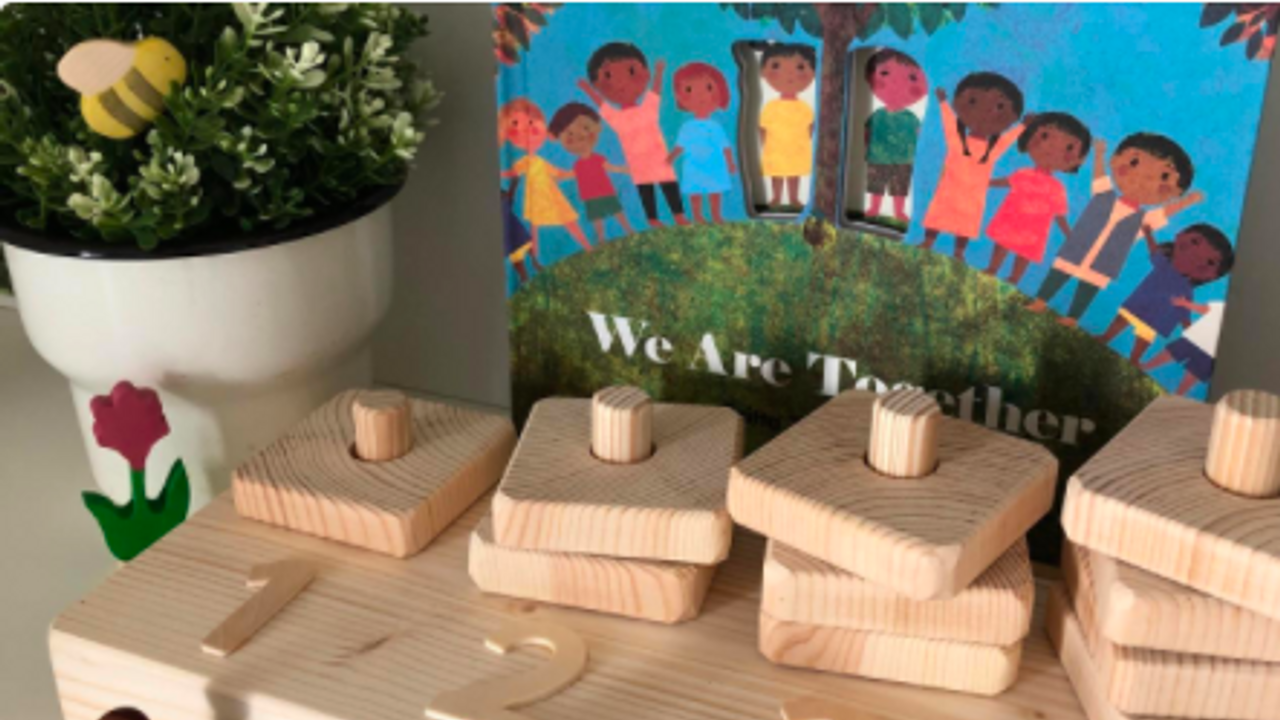'We've always done it that way!'

"I always try to do what's right for the children but as a leader i'm battling against what my team have always done, even though I know in my heart it's not best practice. I feel exhausted."

Always come back to the child...that's why we do what we do. It sounds harsh and maybe not very hygge but our main job at work isn't to make great friends with everyone. it's to help our children have the very best outcomes possible.
At times this can feel like it's causing friction in the team and that the practice isn't cohesive across the setting. The children then pick up on this and it can also send them mixed messages on rules and expectations.
Here are three things you can try today to bring a more positive way in moving forward together.
1. Go back to your vision
On the Hygge in the Early Years Accreditation I always start the training by coming together as a team and having a shared discussion about how young children learn in your setting and what that looks like as every day practice. I then encourage every staff member to go away and write down their thoughts and these can then be combined to create one shared vision in your setting.
The environment, daily routine, planning, policies and every day way of working needs to come back to this vision. This becomes the beating heart of your practice and when something doesn't feel right in the practice it's probably because it doesn't fit in with the shared vision you've all created.
If you haven't yet got a shared vision in your setting find a time over the next few days to begin developing this. Then be patient as change won't happen over night but gently working away at it every day will help you eventually get to where you need to be.
2. Reflecting on practice
Having always done something a certain way isn't always a bad thing. Perhaps that way works really well and if so there is no need for it to be changed. However every now and again take the time to reflect on the practice that's going on and the systems in place.
Often things continue to be done a set way because that team are not always aware of other ways something can be done or it might feel daunting. For instance moving to a more child led approach with planning when there has been very little training made available on the process to do this.
Take a look at the CPD opportunities your team have had (either in house or through a training provider) and look out for any opportunities to support these. As a Foundation Stage Leader I had a subscription for our early years team to Nursery World Magazine. These would be popped into the staff room and I would put a copy of a particularly interesting article in pigeon holes or on the notice board to allow staff to read in their own time. You might also decide to sign up to a training provider that offers unlimited access to short courses that can be done virtually from setting or home. The Hygge in the Early Years Accreditation allows all staff in the setting to have a complimentary log in and work through the training.
With any virtual training, the time to come together and reflect on what you've been trained on needs to happen for any impact to be had. The opportunity to bounce ideas around with each other and become excited at trying something new.
3. Create an action plan and be accountable
Begin start taking small steps towards meeting the type of practice you wan't to be seeing.
I like creating a picture, photos and quotes vision board of the hopes and dreams we have. Our end goal of what we hope our days to be like. Pop it up on the staff notice board or somewhere everyone can see it every day. We want our end goal to be in the front of our minds.
Then create an action plan out of this by asking what small steps are needed to reach this end point? For example if you're wanting to move towards creating more comfort and warmth in your environment you would need to;
- Identify the problem in the area: e.g area not used by the children, disruptive behaviour often observed.
- Carry out an observation of the children using the area using the Leuvan scale of wellbeing and involvement.
- Audit what you currently have in your environment
- Write a list of what you would like to have in the environment to add feelings of warmth and comfort
- Involve the children by asking them what they would like in the area
- Share the list with staff and parents and invite donations/ opportunities for charity shop buys
- Add the new items into the provision with the children
- Reflect how the provision is used and measure the children's levels of wellbeing and involvement using the Leuvan scales
Then you need to assign each step to a staff member and get into the habit of reviewing this regularly to ensure accountability of the actions.
For more support on leading your team take a look at my Extraordinary Early Years Leader Training programme.
Have you tried my FREE Introduction to Hygge Training yet?




